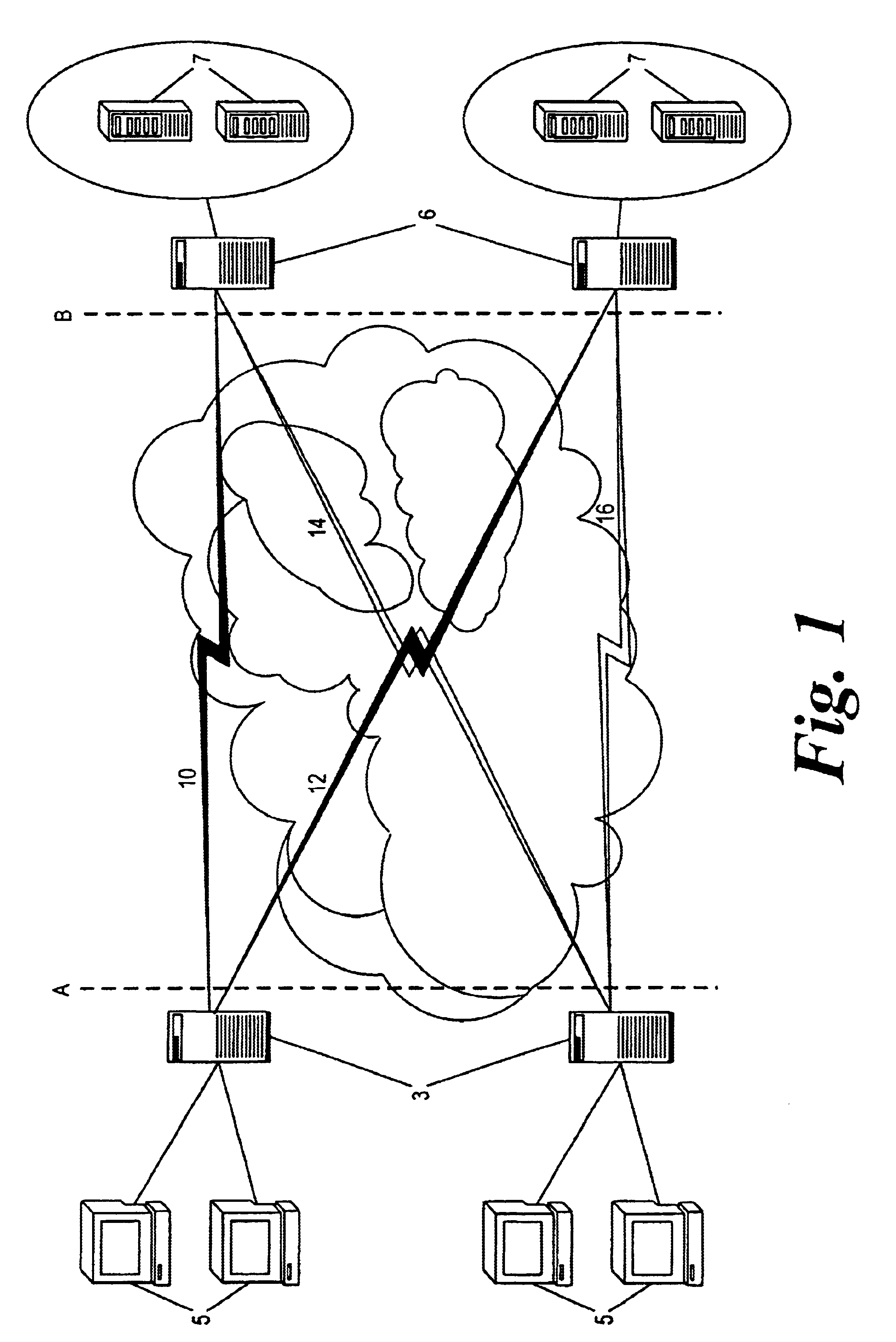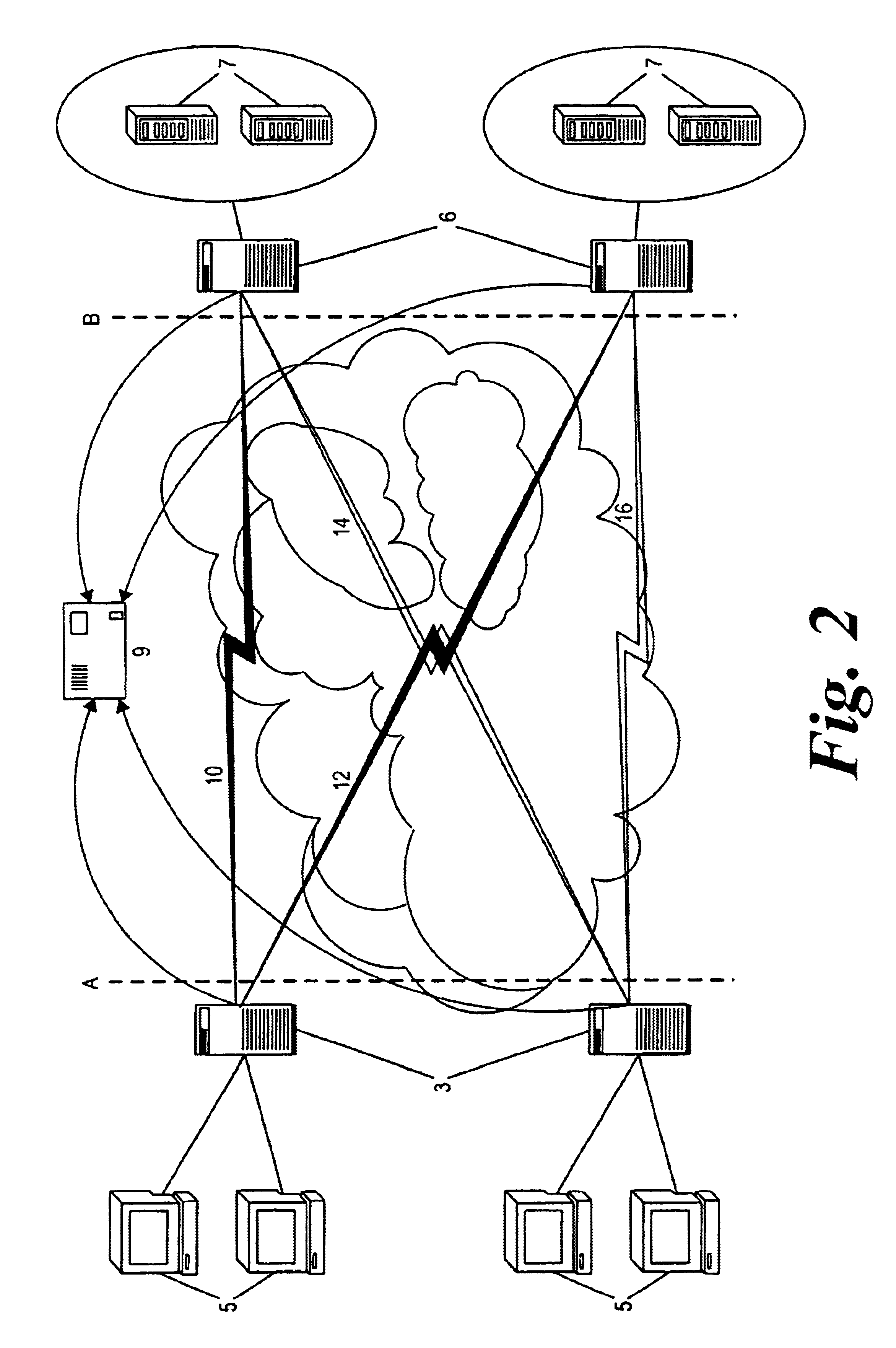Method and apparatus for optimizing network service
a network service and network optimization technology, applied in the field of network service optimization, can solve the problems of not widely available qos support, hard or almost impossible to provide qos guarantees across multiple networks, and no single accepted scheme to support qos guarantees for internet protocol based (ip-based) applications
- Summary
- Abstract
- Description
- Claims
- Application Information
AI Technical Summary
Problems solved by technology
Method used
Image
Examples
Embodiment Construction
With reference to FIG. 1, a load balancing system is shown which is divided into a client side (network edge) A and a server side (data center) B. The network edge A may include a number of clients 5 and a number of network edge devices 3, for example servers, which interact with a number of server controllers 6 on the server side. “Subscriber edge” devices 3, which perform in a similar fashion to a World Wide Web (WWW) proxy for WWW traffic, are set close to and are accessable to the clients 5. The subscriber edge devices 3 see all requests made by the clients 5 for a specific service. Each server controller is set close to the servers and is either implemented as a process on the associated server 7, or on a server switch, or as a proxy server. Each subscriber edge device 3 subscribes to the server controllers 6 forming a star network centered on the edge, whilst each server 7 sees a complimentary star network represented by the subscriber edges subscribed to it.
Interaction occurs...
PUM
 Login to View More
Login to View More Abstract
Description
Claims
Application Information
 Login to View More
Login to View More - R&D
- Intellectual Property
- Life Sciences
- Materials
- Tech Scout
- Unparalleled Data Quality
- Higher Quality Content
- 60% Fewer Hallucinations
Browse by: Latest US Patents, China's latest patents, Technical Efficacy Thesaurus, Application Domain, Technology Topic, Popular Technical Reports.
© 2025 PatSnap. All rights reserved.Legal|Privacy policy|Modern Slavery Act Transparency Statement|Sitemap|About US| Contact US: help@patsnap.com



